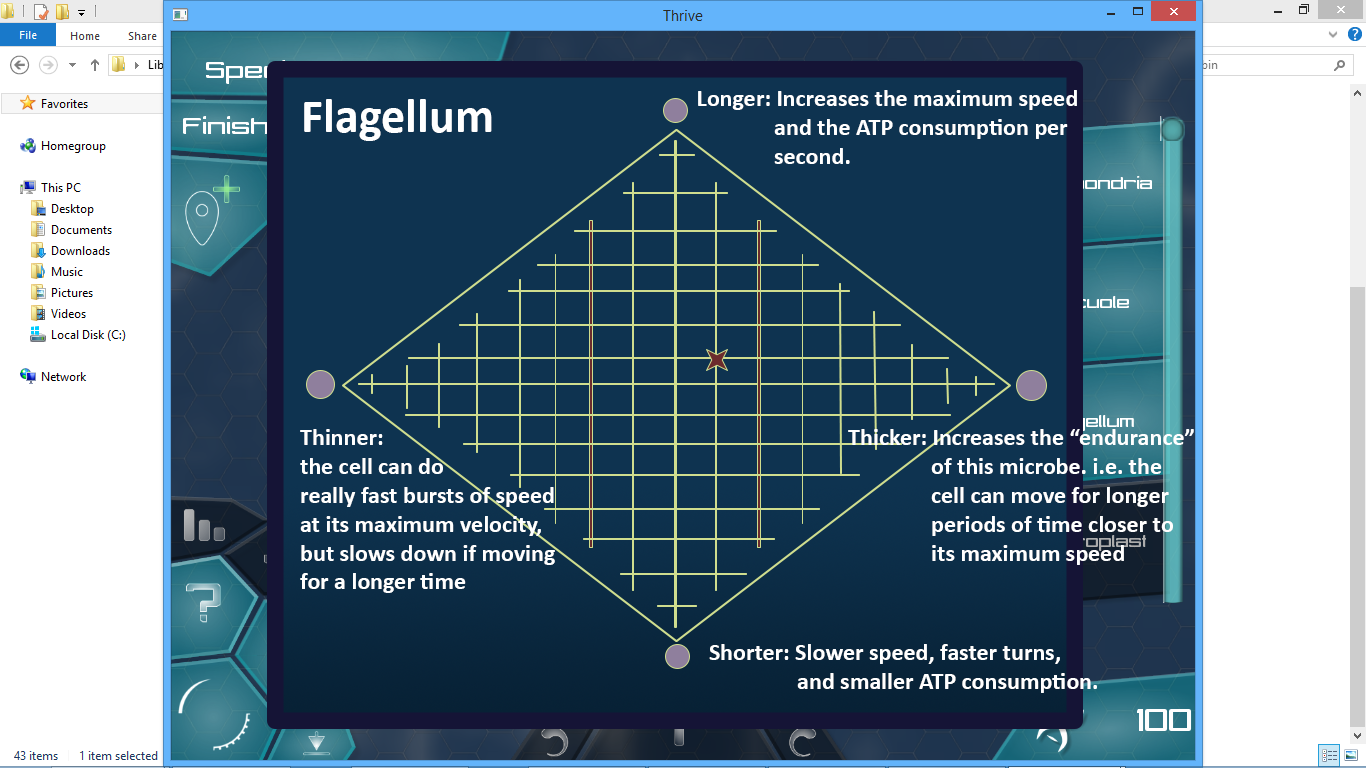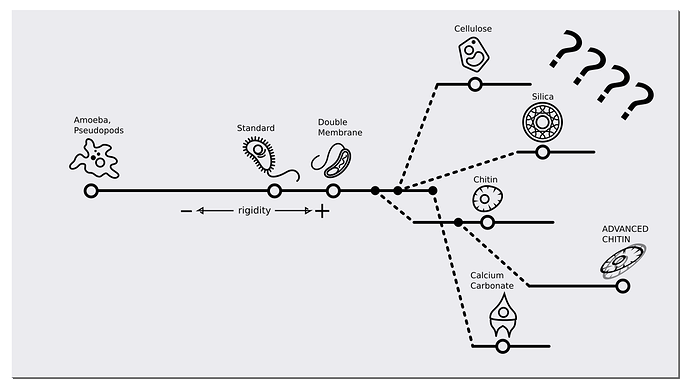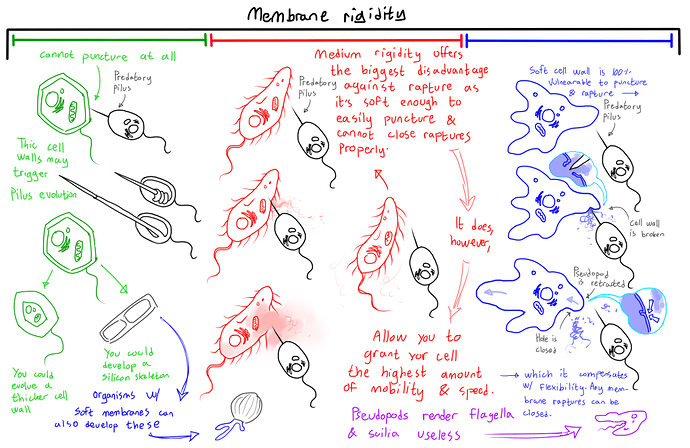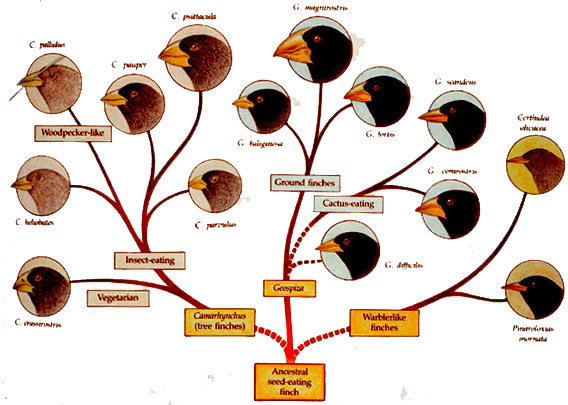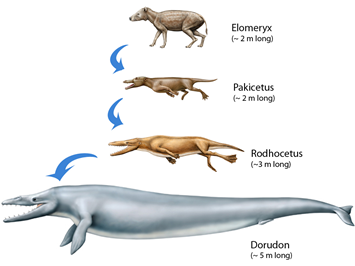“If it could be demonstrated that any complex organ existed, which could not possibly have been formed by numerous, successive, slight modifications, my theory would absolutely break down. But I can find no such case.” On The Origin of Species, Charles Darwin
Every wonderful product of nature, no matter how astonishing, is a result of continuous mutation and survival. There is no forward-thinking in evolution, and there is no planning in evolution. A “proto-eye” was never evolved just to eventually lead to the development of an eyeball. Rather, an organ which allowed for the detection of light and dark proved to be extremely beneficial to the survival of an organism sometime in the Precambrian. This “eyespot” stuck, and eventually, organisms which had this eyespot develop into a cup thrived due to a newfound ability to discern the direction of light. Enclosing this cup with a structure and developing a structure which can reflect light helped the organism discern the shape of its environment.
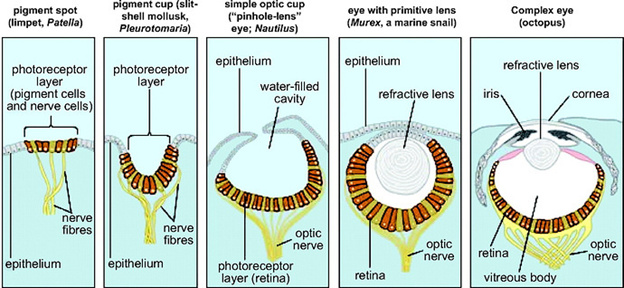
There was never a “plan” for an eye; all these adaptations weren’t developed just to get to the eye. They just all happened to develop, and happened to be useful in that organism’s ecosystem. And now, we have the eye.
Considering this, I kept trying to think of a way to represent this continuous, unplanned process of mutation, survival, and replication. I thought it was amazing how all of these diverse, awe-inspiring adaptations were a result of several random, simple mutations that would sum up to complex features; how cool would it be if there was a “Woah, I didn’t think this was in my creature’s future” moment, where a cool ability is made available because you have certain traits which can be evolved into this ability?
Of course, we can’t just take away the player’s ability to create their own organism just because “evolution is random”. We also can’t leave the player completely in the dark as to what is in store for their organism’s future just because they chose a certain cool organ. Thrive is first-and-foremost a game, which means it has to be fun and at least a bit accessible and user-friendly, which means the player’s autonomy is as important as simulating evolution. We must find the perfect balance between making sure that the player feels in control of their fate and creating a mechanism which helps represent the continuous nature of evolution, and the best way to do this, I believe, is a “skill-tree”.
Many different games have many different versions and variations of a skill-tree, but the basic concept remains the same; a player unlocks something which branches off of a previous something that was available to them. These upgrades built on the past upgrade, and can either enhance the capabilities of an existing ability or can introduce a new, related ability. For a Thrive-related example, observe A Humankind Odyssey, which follows the evolution of humanity.
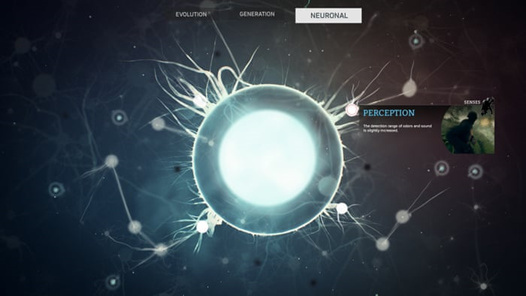
In it, a skill-tree is used to represent the unique adaptations which eventually lead to us, giving the user new capabilities which will eventually be used to unlock other capabilities. For example, one skill which allows us to switch the hand with which an object is carried on the go can be furthered into allowing us to grab an object and swing or switch and throw an object, which can be useful with spears. Another skill allows the human to stand upright while still, which can let us see further; eventually, it can be expanded into walking upright, which can help with carrying objects and speed. I can envision a system very similar to this being extremely useful to Thrive, in which choosing a part and upgrading that part down a certain path can either enhance the existing part or unlock new entirely new parts similar to the existing one.
I feel like using a system similar to Spore, in which the player selects a part from a palette of pre-existing parts and switches that part for something better once they get enough mutation points can only get Thrive so far; it can definitely and perhaps should be used to extent, but if that is the only way through which a player evolves their creature, the replay-ability, realism, fun, discovery, and ingenuity of Thrive will be limited. As discussed before, evolution doesn’t work this way; just because legs came from fins doesn’t mean fins are in anyway less useful than legs, doesn’t mean all animals should evolve legs over fins, and doesn’t mean legs are the ultimate goal of evolution; they’re just useful in different situations. If we only show evolutionary progress as being represented through the trading of parts for another as in Spore, we are essentially limiting Thrive and the player into believing these assertions to be true, into being convinced that the only way to go on from this point is to grow legs and hop on land. Offering a skill tree mechanism that is just as essential and goes hand-and-hand with this selection of parts to the game mechanism through which a player evolves their creature can, I believe, do wonders.
So, how should this skill tree work? The premise of it is pretty simple, but if done right, it can represent extremely complex ideas and mechanisms of evolution through somewhat fun, gamey ways. Essentially, the player is offered an “upgrade skill-tree” in their existing parts that have multiple “branches”, which can lead to multiple playstyles and diverse adaptations (perhaps represented by unlocking other parts?). A system akin to this can be so flexible and dynamic, I feel.
(Note: I am rusty with cellular biology, so please excuse any inaccuracies, generalities, or layman’s talk.)
(Also Note: Because of how simple, broad but complex this system is, I am sure there are many criticisms and gaps in the concept. If you see one, please mention it so it could be addressed.)
To keep with the theme of continuation and increasing complexity in Thrive, it should start out simply.
Example 1: the player starts out as the cytoplasm blob that the developers love talking about; LUCA. A few, essential parts could be offered, which represents the most basal of cell structures that prokaryotes can utilize. These few essential parts can be upgraded down specific paths that are both useful but somewhat specific. Upon reaching a certain “stage” in their upgrade paths, the player is offered the “nucleus” upgrade, which is used to unlock membrane bound organelles. This nucleus upgrade is always available, but the player could choose to pursue another upgrade pathway if they so wish.
Example 2: the player could place down a mitochondria and eventually choose to specialize the mitochondria fit a certain playstyle. For example, perhaps to allow a more rapid creation of ATP at the expense of burning glucose more quickly (+10% metabolism speed, etc.), or a slower but more efficient burning down of existing glucose (dumb example and not accurate, but think along the lines of 1 glucose = 2 ATP → 1 glucose = 4 ATP, -10% metabolism speed, etc). Future upgrades could either consist of snowballing these effects, or perhaps unlocking extra functions of the mitochondria unavailable at first due to advanced specialization (for example, in chloroplasts, an upgrade could lead to developing into a thermoplast, which unlocks the placement of thermoplasts).
At the beginning of the microbe stage, this seems pretty useless, as the environment is filled with free-floating material; but remember, the developers always talk about how eventually, as the microbe stage progresses, these free-floating recourses will become much more sparse, meaning the player would have to either adapt an efficient autotrophic system or become more efficient at hunting. There could be so many different playstyles created based off of upgrading your organism into specific niches in response to this scarcity. An autotrophic player cell that also traps cells using signaling or toxins would probably prefer a slower but more efficient metabolism in order to spare energy in between each successful hunt, while a player cell with a predatory pilus would probably want a faster metabolism to spare more ATP when chasing prey items.
My mind is buzzing with ideas about how inter-connected and in-depth this all could be. Every organelle can have its own origin pathway; chloroplasts can develop from something, and that something can develop from something, all because a player decides to invest in a certain skill tree pathway. The same could be said for any organelle; any structure, even! Legs can be a byproduct of an upgrade pathway which gives fins further flexibility, which can benefit shallow-water mobility and agility at the cost of speed, or etc. Wings can then be a byproduct of a certain leg skill-tree pathway; choosing to elongate digits for a benefit, etc. There are so many adaptations and evolutionary stories that could be represented just by choosing to upgrade an organelle.
Sorry if this is a bit of a ramble; I got excited, it’s late at night, and I literarily opened up a Word document and spewed forth my thought. But please, please, please, discuss. Tell me if you have an idea to improve this, or if you have a problem with it that either means we should think of something else or improve this; I feel like this can go so far. Because this concept is so widely applicable, and my description of it is so generic, there could be areas that need to be ironed out, or other systems that could be added.
So, what do you think?
 )
)